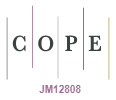Augmenting cased hole logging and pressure testing: improving subsurface well barrier risk assessment through machine learning
Tim Thomas A * and Andrew Thompson BA
B

Tim has been employed in the Australian petroleum industry for over a decade, working in a variety of roles in drilling and completions and well operation teams. Tim is currently responsible for well integrity for a field of approximately 980 active wells and the associated Well Integrity Management System. Along with this work, Tim is completing a PhD at the University of Queensland, researching the regulation of well integrity for unconventional oil and gas projects across several jurisdictions. Prior to this, Tim was a logistics officer in the Australian Army, serving both at home and abroad for 13 years. |

Andrew has over 20 years’ experience in the oil and gas industry with Schlumberger and onshore gas production in Queensland, Australia. Andrew holds a Bachelor of Mechanical Engineering degree from the Queensland University of Technology and is a member of all the relevant industry groups. Andrew is currently Chief Operating Officer at a critical mineral mining operation in North Queensland, and he is consulting to the well integrity servicing companies to build technological capabilities to the coal seam gas space. |
Abstract
Assurance of casing and cement integrity is a key component in well integrity management. Traditional methods to assess casing and cement have largely required rigs or logging units to intervene on a well. Such methods are being enhanced by the introduction of new technologies, especially in downhole gauges. Many operators now can gather greater volumes of data than in the past, which has led to significant interest in adopting machine learning (ML)-based applications. This interest has resulted in ML being applied in many operators, especially in the areas of production surveillance, drilling optimisation and reservoir engineering. One area that hasn’t received as much interest is well integrity management systems. This paper assists in addressing this research gap by examining key reasons why usage in well integrity management has been less than other areas, reviewing analyses from previous researchers and discussing what assurance activities are suited for use in ML. Additionally, this paper summarises the results of a collaborative research project conducted with a coal seam gas (CSG) operator to assess the feasibility of implementing an artificial neural network-based application to support its Well Integrity Management System. This research demonstrated that such an application could be implemented in a CSG environment and could improve outcomes by augmenting the current system, especially in risk assessment and well selections of interventions.
Keywords: artificial neural networks, barrier assurance, barrier failure, casing integrity, cement integrity, coal seam gas, data management, integrity management, machine learning, Queensland, risk assessment, well integrity, well surveillance.
 Tim has been employed in the Australian petroleum industry for over a decade, working in a variety of roles in drilling and completions and well operation teams. Tim is currently responsible for well integrity for a field of approximately 980 active wells and the associated Well Integrity Management System. Along with this work, Tim is completing a PhD at the University of Queensland, researching the regulation of well integrity for unconventional oil and gas projects across several jurisdictions. Prior to this, Tim was a logistics officer in the Australian Army, serving both at home and abroad for 13 years. |
 Andrew has over 20 years’ experience in the oil and gas industry with Schlumberger and onshore gas production in Queensland, Australia. Andrew holds a Bachelor of Mechanical Engineering degree from the Queensland University of Technology and is a member of all the relevant industry groups. Andrew is currently Chief Operating Officer at a critical mineral mining operation in North Queensland, and he is consulting to the well integrity servicing companies to build technological capabilities to the coal seam gas space. |
References
Albert LE, Standley TE, Tello LN, Alford GT (1988) A Comparison of CBL, RBT, and PET Logs in a Test Well With Induced Channels. Journal of Petroleum Technology 40(09), 1211-1216.
| Crossref | Google Scholar |
Alquraini AH, Al Sadah HH, Bayounis RA, Al-Kadem MS (2024) Advanced Corrosion Classification Utilizing Machine Learning and Deep Learning Algorithms. Paper presented at the ADIPEC, Abu Dhabi, UAE, November 2024. Paper no. SPE-221964-MS. 10.2118/221964-MS
Ball K, Arbus T, Odi U, Sneed J (2017) The rise of the machines, analytics, and the digital oilfield: artificial intelligence in the age of machine learning and cognitive analytic. SEG Global Meeting Abstracts 410-418.
| Crossref | Google Scholar |
Bigelow EL (1985) A Practical Approach to the Interpretation of Cement Bond Logs. Journal of Petroleum Technology 37(07), 1285-1294.
| Crossref | Google Scholar |
Bost S (2024) Machine Learning for Enhanced Production Optimisation and Management. Paper presented at the APOGCE 2024, Perth, Australia, October 2024. Paper no. SPE-221205-MS. 10.2118/221205-MS
Bottomley W, Furniss JP, Oguche I, Konopczynski M (2017) Reservoir Characterisation Using Permanent Distributed Temperature Sensing in Coal Seam Gas Development: Success and Challenges in the Surat Basin. Paper presented at the SPE/IATMI Asia Pacific Oil & Gas Conference and Exhibition, Jakarta, Indonesia, October 2017. Paper no. SPE-186203-MS. 10.2118/186203-MS
Celemín A, Estupiñan DA, Nieto R (2021) Model comparison for ESP run-life prediction: classic statistics vs. machine learning. Paper presented at the SPE Annual Technical Conference and Exhibition, Dubai, UAE, September 2021. Paper no. SPE-206028-MS. 10.2118/206028-MS
David RM (2016) Approach towards establishing unified petroleum data analytics environment to enable data driven operations decisions. Paper presented at the SPE Annual Technical Conference and Exhibition, Dubai, UAE, September 2016. Paper no. SPE-181388-MS. 10.2118/181388-MS
Fertl WH, Pilkington PE, Scott JB (1974) A Look at Cement Bond Logs. Journal of Petroleum Technology 26(06), 607-617.
| Crossref | Google Scholar |
Gai H, Lockyear C (1994) Cement Bond Logs – A New Analysis To Improve Reliability. SPE Advanced Technology Series 2(1), 34-42.
| Crossref | Google Scholar |
Goodwin KJ, Crook RJ (1992) Cement Sheath Stress Failure. SPE Drilling Engineering 7(4), 291-296.
| Crossref | Google Scholar |
Ibukun M, Elyan E, Amish M, Njuguna J, Oluyemi GF (2024) A Review of Well Life Cycle Integrity Challenges in the Oil and Gas Industry and Its Implications for Sustained Casing Pressure (SCP). Energies 17(22), 5562.
| Crossref | Google Scholar |
Ingraffea AR, Wells MT, Santoro RL, Shonkoff SBC (2014) Assessment and risk analysis of casing and cement impairment in oil and gas wells in Pennsylvania, 2000–2012. Proceedings of the National Academy of Sciences of the United States of America 111(30), 10955-10960.
| Crossref | Google Scholar | PubMed |
Jutten JJ, Guillot D, Parcevaux PA (1989) Relationship Between Cement Slurry Composition, Mechanical Properties, and Cement-Bond-Log Output. SPE Production Engineering 4(01), 75-82.
| Crossref | Google Scholar |
King GE, King DE (2013) Environmental risk arising from well-construction failure—differences between barrier and well failure, and estimates of failure frequency across common well types, locations, and well age. SPE Production & Operations 28, 323-344.
| Crossref | Google Scholar |
Lim Chen Ning I, Craven M, Tokar T, Dasgupta S, Benet P, Merlino M, Feherty C (2023) Nondestructive testing for wellbore integrity with distributed acoustic sensing. SEG Technical Program Expanded Abstracts 454-458.
| Crossref | Google Scholar |
Noshi CI, Schubert JJ (2018) The role of machine learning in drilling operations; a review. Paper presented at the SPE/AAPG Eastern Regional Meeting, Pittsburgh, PA, USA, October 2018. Paper no. SPE-191823-18ERM-MS. 10.2118/191823-18ERM-MS
Noshi C, Noynaert S, Schubert J (2018) Casing failure data analytics: A novel data mining approach in predicting casing failures for improved drilling performance and production optimization. Paper presented at the SPE Annual Technical Conference and Exhibition, Dallas, TX, USA, September 2018. Paper no. SPE-191570-MS. 10.2118/191570-MS
Pilkington PE (1992) Cement Evaluation – Past, Present, and Future. Journal of Petroleum Technology 44(2), 132-140.
| Crossref | Google Scholar |
Ragab AMS, Yakoot MS, Mahmoud O (2021) Application of machine learning algorithms for managing well integrity in gas lift wells.Paper presented at the SPE/IATMI Asia Pacific Oil & Gas Conference and Exhibition, Virtual, October 2021. Paper no. SPE-205736-MS. 10.2118/205736-MS
Sankaranarayanan B, Abubakar A, Allen DF, Diaz Granados I (2021) Automating the log interpretation workflow using machine learning. Paper presented at the SPE Annual Technical Conference and Exhibition, Dubai, UAE, September 2021. Paper no. SPE-205950-MS. 10.2118/205950-MS
Shadravan A, Tarrahi M, Amani M (2017) Intelligent tool to design drilling, spacer, cement slurry, and fracturing fluids by use of machine-learning algorithms. SPE Drilling & Completion 32(02), 131-140.
| Crossref | Google Scholar |
Sultan AA (2009) Well integrity management systems; achievements versus expectations. Paper presented at the International Petroleum Technology Conference, Doha, Qatar, December 2009. Paper no. IPTC-13405-MS. 10.2523/IPTC-13405-MS
Temizel C, Canbaz CH, Palabiyik Y, Aydin H, Tran M, Ozyurtkan MH, Yurukcu M, Johnson P (2021) A thorough review of machine learning applications in oil and gas industry. Paper presented at the SPE/IATMI Asia Pacific Oil & Gas Conference and Exhibition, Virtual, October 2021. Paper no. SPE-205720-MS. 10.2118/205720-MS
Thomas T, Norman B (2023) Quantifying Well Integrity Risk at Scale: A Repeatable & Data Driven Analysis of Well Integrity in Unconventional Gas Fields. Paper presented at the SPE Annual Technical Conference and Exhibition, San Antonio, TX, USA, October 2023. Paper no. SPE-214929-MS. 10.2118/214929-MS
Ugoyah JC, Ajienka JA, Wachikwu-Elechi VU, Ikiensikimama SS (2022) Prediction of Scale Precipitation by Modelling its Thermodynamic Properties using Machine Learning Engineering. Paper presented at the SPE Nigeria Annual International Conference and Exhibition, Lagos, Nigeria, August 2022. Paper no. SPE-212010-MS. 10.2118/212010-MS


